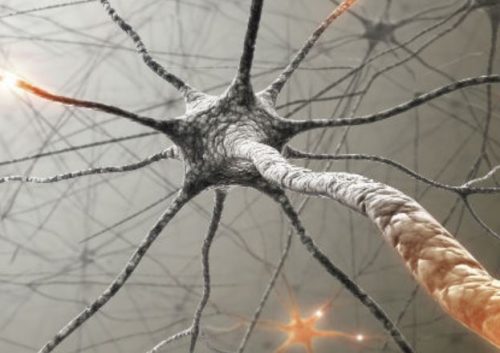A pilot clinical trial showed that bioelectronic medicine treatment was effective in reducing fatigue and pain in lupus patients. The researchers also saw a decrease in arthritis. A pilot study is a small-scale preliminary study that examines the feasibility of an approach that researchers intend to use in a larger scale study.
Cynthia Aranow, MD, will present the trial results at the ACR/ARHP Annual Meeting on Tuesday, October 23rd, 2018. ACR/ARHP stands for the American College of Rheumatology/Association of Rheumatology Professional. Dr. Aranow is a Medical Research Professor at the Feinstein Institute, Manhasset, New York.
The initial trial results offer hope for the approximately five million lupus patients across the world.
Immune system of lupus patients
The immune system of people with lupus cannot differentiate between harmful foreign agents and healthy tissue. In other words, the immune system attacks healthy parts of the patient’s body as if they were harmful viruses or bacteria. Hence, we refer to lupus as an autoimmune disease.
The lupus patient’s overactive immune system, as it attacks healthy cells, causes inflammation and damage to joints. It also causes damage to organs and the skin.
Among the signs and symptoms of lupus, musculoskeletal pain is one of the most common. Up to ninety-five percent of patients have musculoskeletal pain, which affects their quality of life negatively.
There are immunosuppressant medications that reduce inflammation and disease flare-ups. However, these drugs do not work for everybody. They also have side effects.

Bioelectronic medicine for lupus patients
The Feinstein Institute for Medical Research says the following about bioelectronic medicine:
“Bioelectronic medicine uses device technology to read and modulate the electrical activity within the body’s nervous system, opening new doors to real-time diagnostics and treatment options for patients.”
“Nerve-stimulating or nerve-blocking devices, either implanted on a nerve or held against the skin, have the potential to modulate specific nerve activity, elicit a specific change in organ function, and restore health, without the complicated side effects of pharmaceutical agents.”
Apart from trials with lupus patients, bioelectronic medicine devices are also in clinical trials to treat rheumatoid arthritis and colitis patients. Lupus, rheumatoid arthritis, and colitis are inflammatory diseases.
Vagus nerve stimulation
Dr. Aranow and colleagues examined the efficacy and safety of vagus nerve stimulation using a new, proprietary device. Scientists at the Feinstein Institute’s Center for Bioelectronic Medicine developed the device which reduces pain and inflammation in lupus patients.
The vagus nerve is part of our peripheral nervous system. It originates in the brain and branches out throughout the human body.
The vagus nerve controls the digestive tract and heart. It also controls the lungs. Previous studies have shown that stimulating the vagus nerve can reduce inflammation.
Dr. Aranow said:
“Our study shows that vagus nerve stimulation significantly reduced pain and fatigue associated with lupus. We will continue to study this therapy and the mechanisms involved.”
Timir Datta-Chaudhuri and colleagues developed the device that researchers tested on lupus patients in the pilot trial. Datta-Chaudhuri is an Assistant Professor at the Center for Bioelectronic Medicine’s Bioelectronics and Biosensing Lab.
An external stimulation device
Prof. Datta-Chaudhuri said:
“We took the stimulation parameters – the frequency, duration and the intensity of the electrical pulses – identified by previous Feinstein Institute studies on the vagus nerve and immune system, and developed an external stimulation device that pulses through the ear.”
“Many bioelectronic medicine devices are surgically implanted, and we wanted to see if an external device would be as effective, providing patients with an alternative to surgery.”
“The initial results here suggest that our device has the potential to help patients. Further studies are needed to confirm this result.”
Eighteen lupus patients
The researchers randomly selected 12 lupus patients to receive external stimulation of the vagus nerve through the ear. They received the treatment for five minutes each day for four days.
Another six participants received sham stimulation in the ear. They were outfitted with the device, but it didn’t emit electrical pulses.
The patients who received the electrical pulses were in the Intervention Group. The ones who received no electrical pulses were in the Control Group.
The researchers monitored the participants’ pain scores and levels of fatigue before treatment, and then again five and twelve days after the first day of treatment.
On day five, participants in the Intervention Group had experienced a significant decrease in pain and fatigue compared to those in the Control Group. At day 12, the researchers reported similar results.
Kevin J. Tracey, MD, said:
“This study highlights the importance and success of a clinician/engineer partnership to bridge the gap between technology and treatment. The Feinstein Institute is uniquely committed to this expertise by its leadership in the field of bioelectronic medicine.”
“Advances in molecular mechanisms targeted by bioelectronic technology is improving the lives of patients.”
Dr. Tracey is President and CEO of the Feinstein Institute. CEO stands for Chief Executive Officer.
A grant from the John & Marcia Goldman Foundation funded the trial.

